Over the past few years, digital transformation has become a catch-all term for reimagining business in the digital age: it can refer to any process that uses digital technologies to solve for changing business and market requirements. Nearly all (97%) IT decision makers are involved in digital transformation initiatives at their respective organizations, but many struggle to define a clear strategy.
What exactly is driving companies to digitally transform in the first place? How do CIOs of leading companies scope their transformation initiatives? And what can these trends teach us about how to thrive in today’s fast-paced world? To help answer these questions, we’ve sourced data from both MuleSoft proprietary research and third-party findings to identify the most timely and relevant digital transformation trends for 2020. Get a sneak peek of four of the trends below:
Trend 1: Connecting the consumer experience
The consumer experience is at the core of nearly every digital transformation initiative. In fact, 93% of business leaders say delivering a relevant and reliable customer experience will be critical to their company’s overall business performance two years from now. And consumer expectations are only increasing.
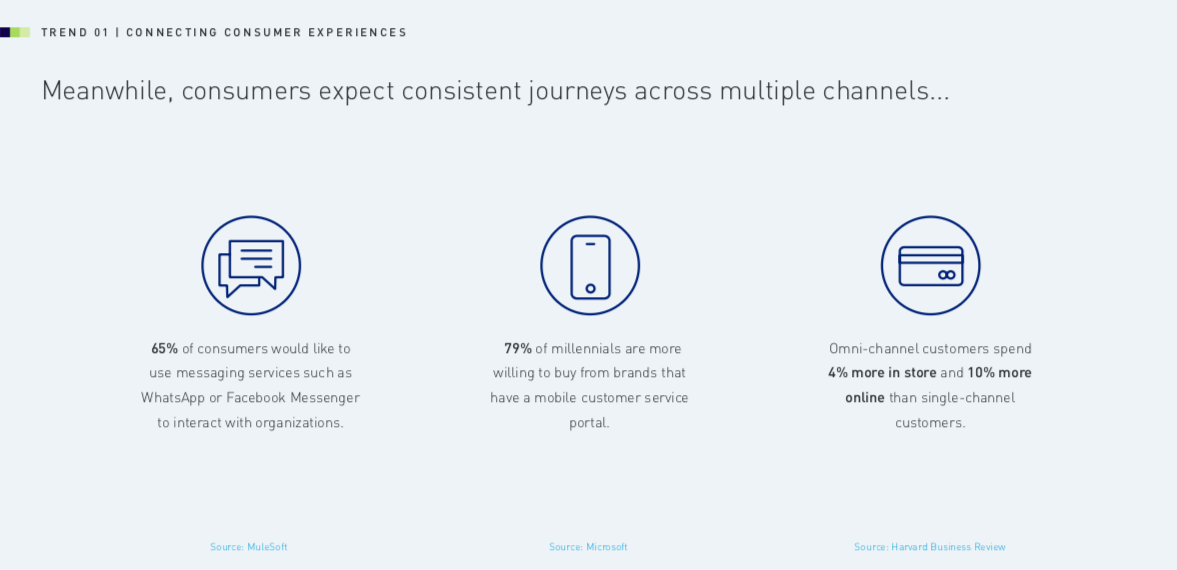
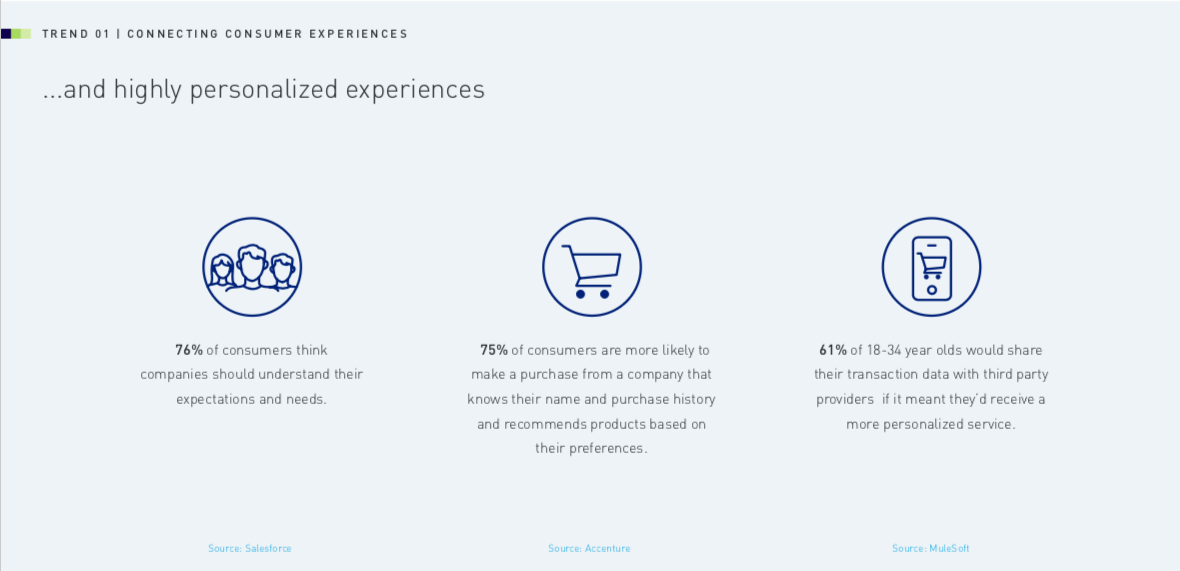
Organizations need to solve for increasing pressure on IT to open up bandwidth for delivering connected, personalized experiences for all of their consumers — from customers to partners to employees to developers.
Trend 2: Data driven business
In addition to providing seamless consumer experiences, the most successful organizations are unlocking their data to innovate at speed. Failure to unlock data has direct consequences for the business, with 83% of IT decision makers reporting that data silos create business challenges within their organizations. At the best-run companies, IT teams are more invested in sharing data insights across the business.
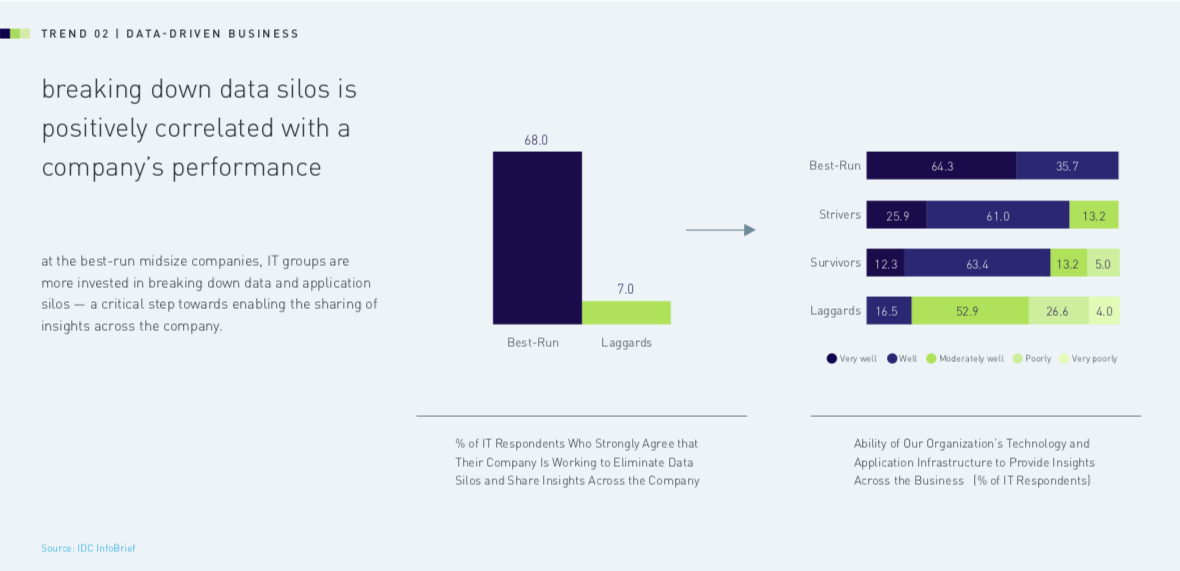
Once that data is unlocked, businesses can put it to work to improve customer experiences, streamline operations, and quickly launch new products and services. Lane Crawford is using data to increase customer engagement across mobile, in-store, and online interactions. Airbus provides its employees on the shop floor with real-time data so they can make fast, accurate operational decisions. Cox Automotive uses APIs to provision access to partners and launch joint offerings, products, and services in seconds.
Trend 3: AI and machine learning
Organizations across industries are increasingly investing in AI and machine learning capabilities. In financial services, automation is driving faster data-based decisions. In retail, AI is used to personalize offers and promotions. In the public sector, chatbots provide around-the-clock citizen support. In healthcare, machine learning is enhancing disease detection and treatment.
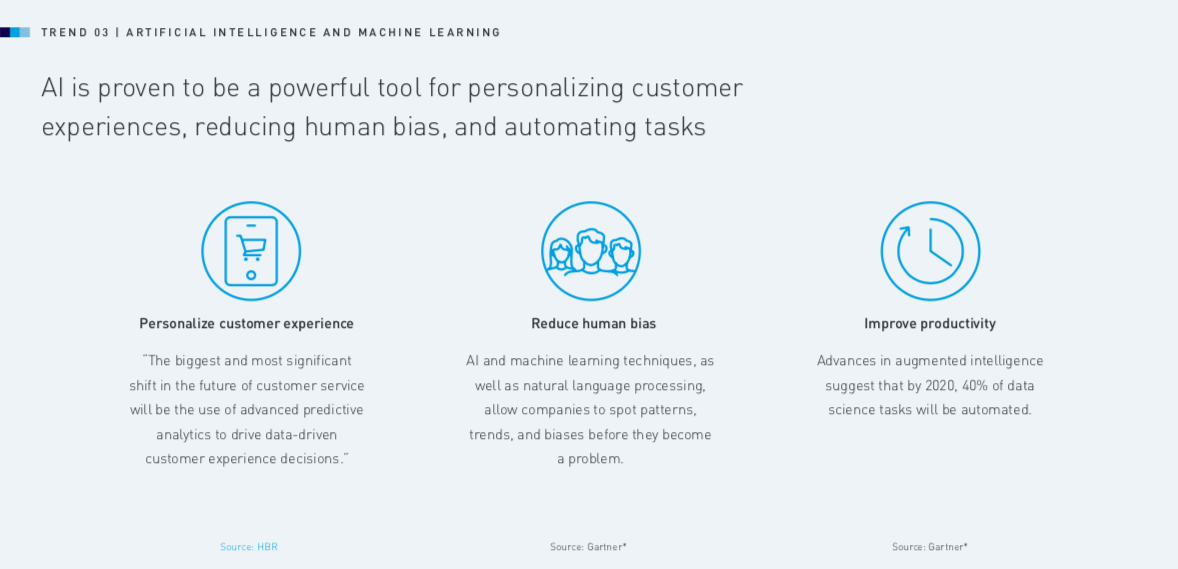
However, the value of these tools are dependent upon the data they are fed. “Organizations are often restricted by the fact that their data is locked up in siloed systems and applications. As a result, getting that data into an AI engine to start revealing insights can be a major problem,” explains MuleSoft founder Ross Mason. “If AI is the ‘brain,’ we liken APIs and integration to the ‘nervous system’ to help AI really create value in a complex, real-time business context.”
Trend 4: Multi-cloud computing
Most (84%) of enterprises today run on multi-cloud environments, with many organizations turning to different cloud platforms for each of their specialized needs. No single cloud platform meets all enterprise workload requirements, but managing multiple clouds is complicated, specifically when it comes to moving application workloads between cloud environments.
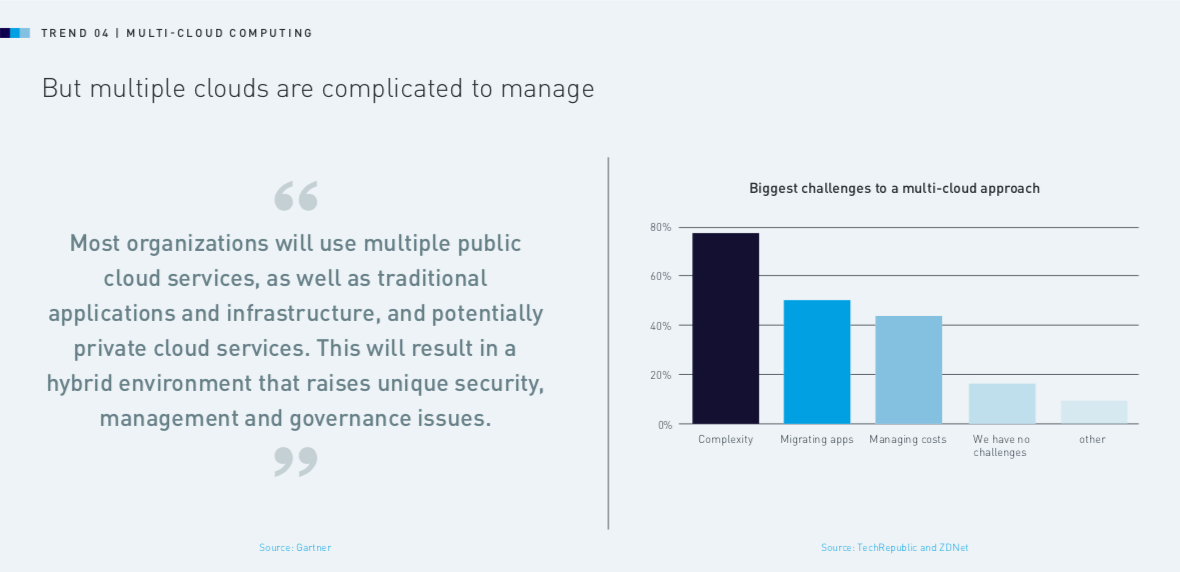
API-led application development is a potential solution to this problem. APIs help unlock the data and unique functionalities of applications residing in multiple cloud environments. In a recent study, Capgemini articulated the business impact of API-led hybrid integration efforts. “Integrators” who displayed greater confidence in their API and integration capabilities outperformed their peers in key business metrics including revenue growth, innovation, and speed to market.
Ready to transform your business in 2020?
Trends 1-4 outlined above focus on the business goals and technology trends defining digital transformation in 2020. If you found these insights useful, be sure to download the full report for industry-specific examples of each trend in action. Then, discover Trends 5-7, which break down the top strategies to turbocharge your business, from partnering with IT to co-creating value with external stakeholders to fueling business performance with APIs.









